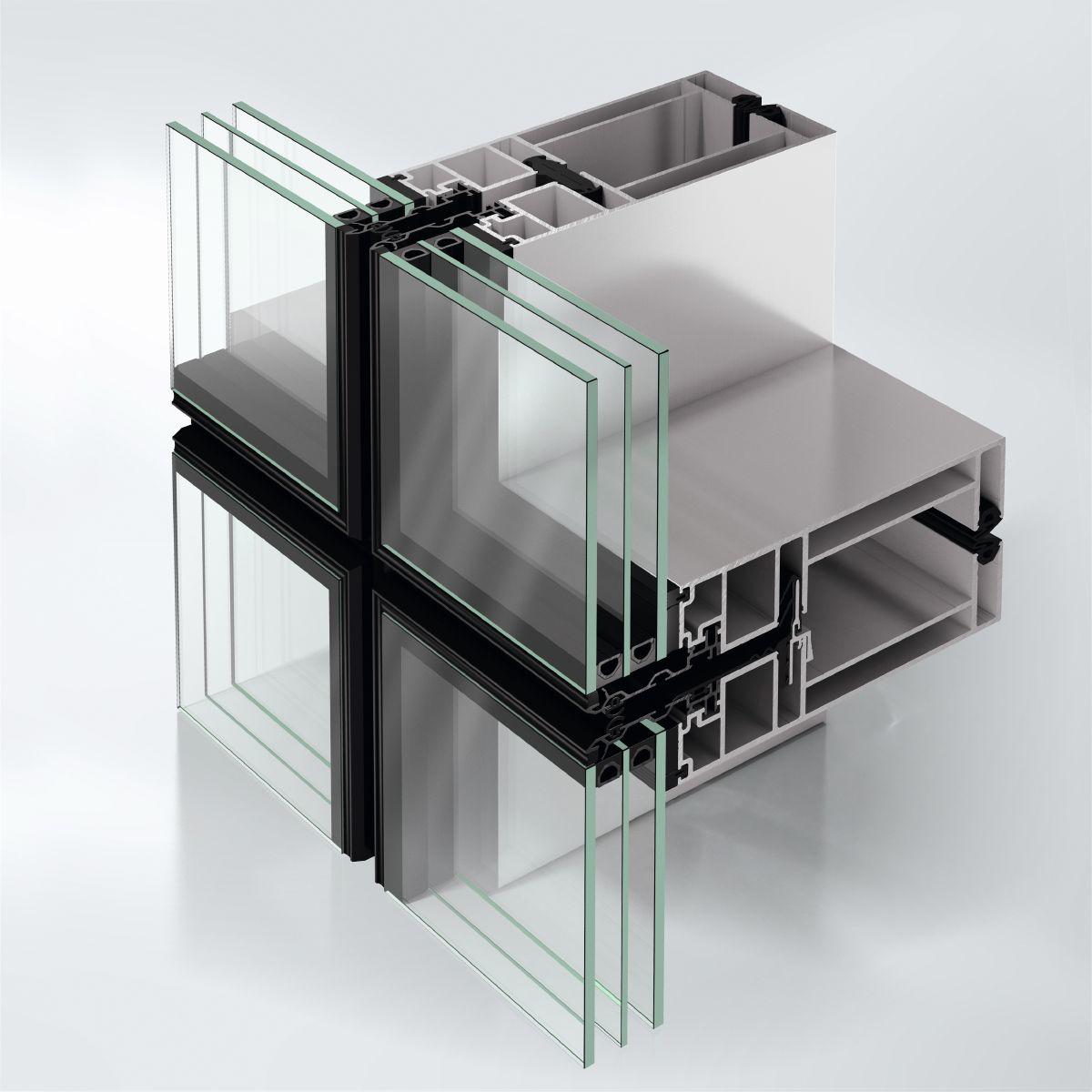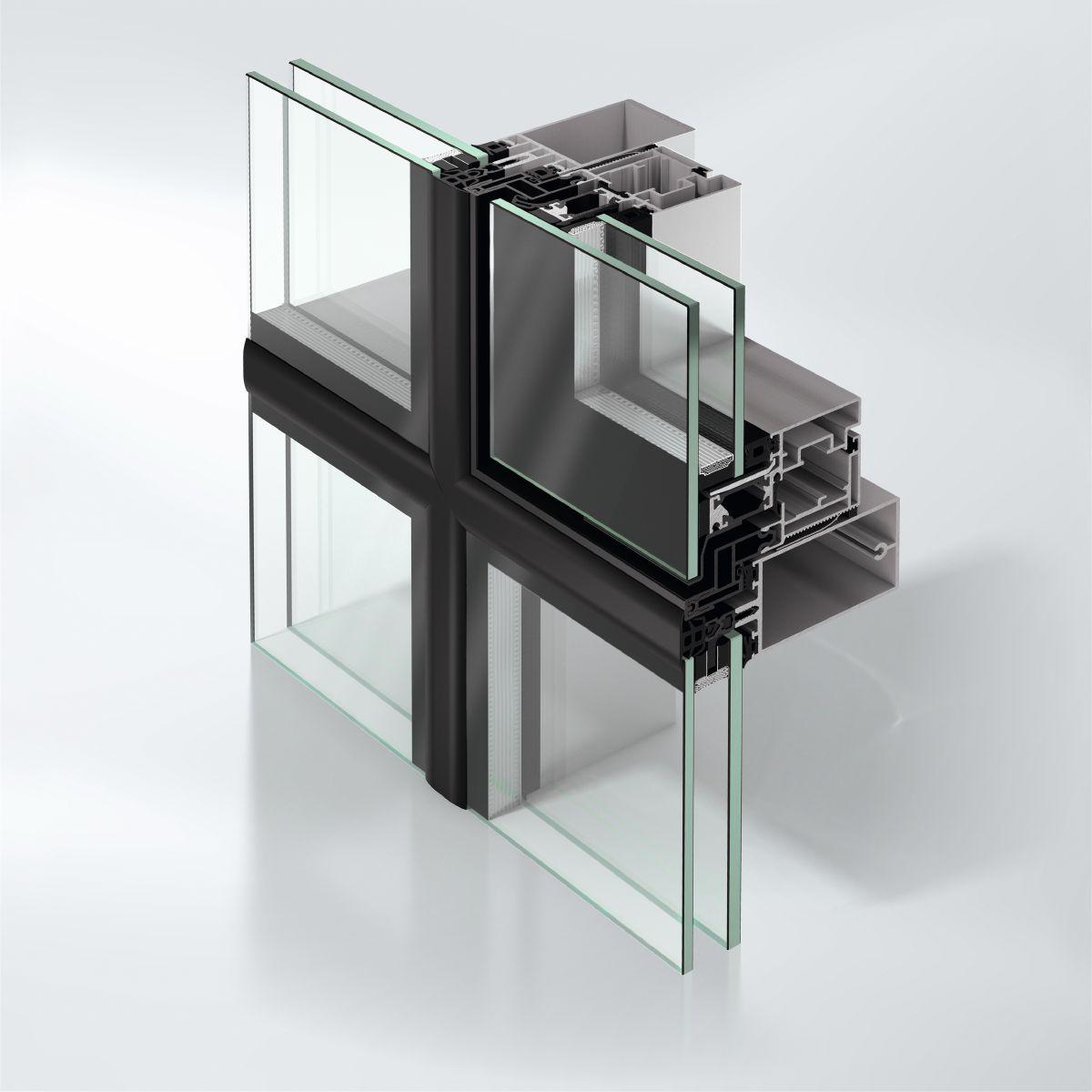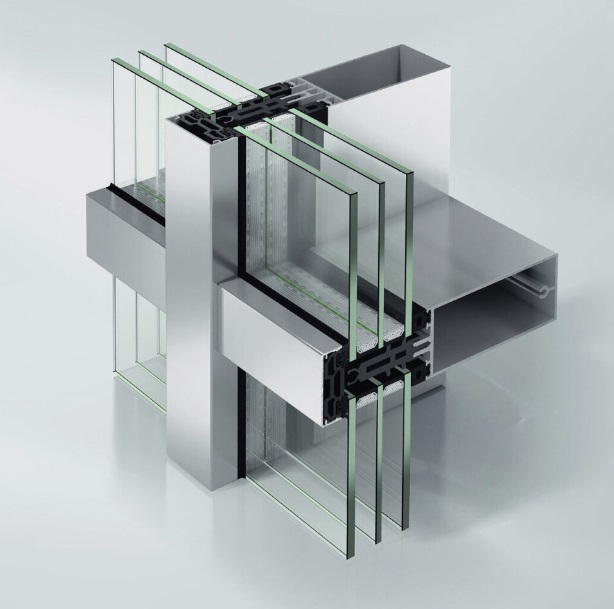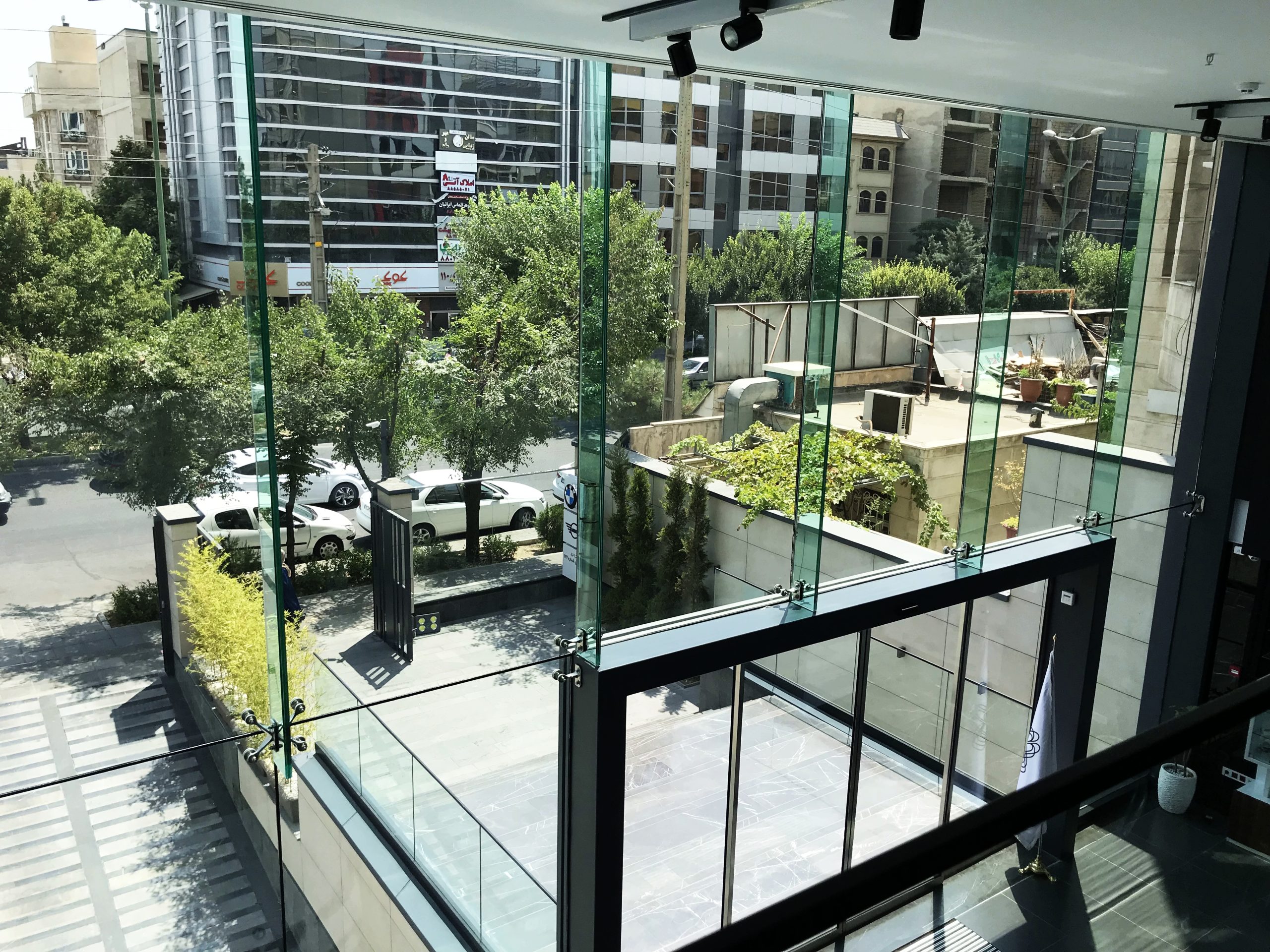Our Products:
Systems That Define Modern Architecture
THE MOST IMPORTANT ELEMENTS
We emphasize durability, sustainability and performance when selecting facade materials to achieve the best results in the appearance of the system and its performance, while considering maintenance as an undeniable factor. Below we will review the facade systems in which we have expertise and experience.
Unitized Curtain wall:
Consists Of Large Pre-Assembled Units That Are Installed Directly On The Building Structure.
ADVANTAGES
Provides better thermal performance due to factory-fabricated units
Can be installed on site more quickly because they are prefabricated
Generally more resistant to water intrusion and other types of weather damage
Can accommodate structural movement better because prefabricated units can be designed to flex and move with the building structure
Provides a more consistent appearance throughout the building facade
DISADVANTAGES
Generally more expensive than stick systems
Requires more time and off-site planning to fabricate and ship
More difficult to repair and maintain because more complex units must be disassembled and replaced
Provides less flexibility in design and installation, limiting the ability to adapt to unique building structures and layouts
Weak in connection to other systems
If a fault occurs, it is more difficult to fix in this system

SEMI-UNITIZED CURTAIN WALL
A system in which the primary components are installed separately. In this assembly, the vertical mullions are first attached to the floor slabs and the horizontals to the vertical mullions to resemble a grid. The glass panel and spandrel are installed in pre-assembled frames
ADVANTAGES
Easy quality management due to mass production of panels in the factory
Fast and precise assembly
High safety, stability and weather resistance
Suitable for buildings with complex architecture
DISADVANTAGES
Higher price compared to the stick system
High installation cost
More suitable for implementing complex facades

STICK CURTAIN WALL / FACE CAP
In this system, the components are assembled on the building structure. This system is main ly used for low-rise buildings. This is because external access is required to access the upper
ADVANTAGES
Lower cost due to less specialized equipment and labor
Greater flexibility in design and installation
Easier to maintain and repair because each component is individually accessible and replaceable
Can be adapted to accommodate unique building structures and layouts
Can be installed over a longer period of time, allowing for greater control over cash flow and scheduling
DISADVANTAGES
Requires more time on site because each component must be assembled and installed individually. May be more difficult to achieve good thermal performance due to the need for careful sealing and insulation during assembly. May require additional design considerations to accommodate structural movement and ensure long-term stability. Requires skilled labor and may require scaffolding or other equipment to reach heights.
DISADVANTAGES
Requires more time on site because each component must be assembled and installed individually. May be more difficult to achieve good thermal performance due to the need for careful sealing and insulation during assembly. May require additional design considerations to accommodate structural movement and ensure long-term stability. Requires skilled labor and may require scaffolding or other equipment to reach heights.

GLASS-FINNED SYSTEM
Glass or steel bases are used to support the facade glass.

POINT-SUPPORTED SYSTEM
Glass Cups Are Connected To Each Other Using A Spider Network Consisting of Fittings and Bases

